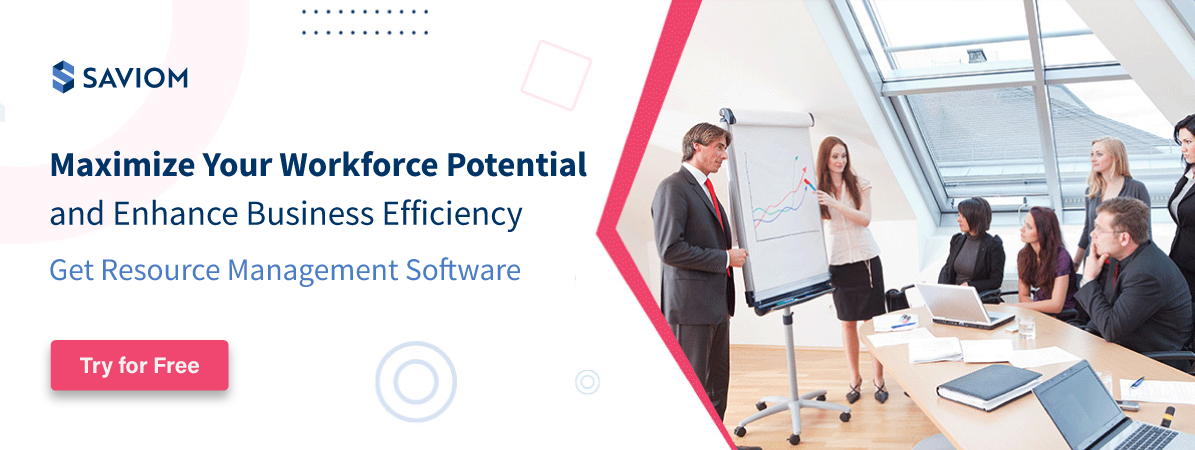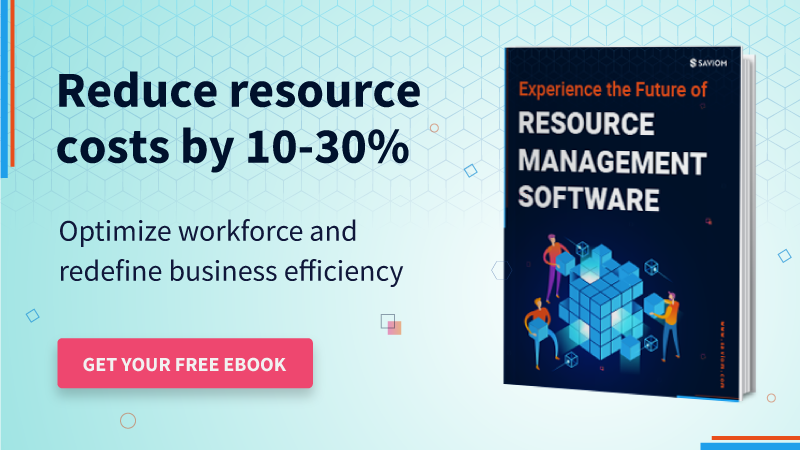“High-performance teams are not models of perfect behavior; they are imperfect teams that know how to recover quickly.”– Loretta Malandro
Every organization aims for a team with the ability and expertise to sail through challenges successfully and translate their efforts into superior results. A cohesive team of motivated individuals performs its best to ensure projects and organizational success.
Thus, a high-performing team can be defined as a group of individuals who are focused on the shared goal and create high-caliber results.
They also have specialized skills that complement each other – where the skillset of two or more individuals collectively generates promising outputs. As a result, they exceed every other similar team as well as the set expectations.
Therefore, creating and sustaining a high-performance culture in a workplace is crucial as the resources are empowered and inspired to work hard and have a sense of fulfillment. A focused understanding will not only bring higher commitment but also elevate productivity, profitability, and client satisfaction.
This article explains how to build a high-performance team and sustain it for consistently high results.
What is sustained high performance?
“Performance is your reality. Forget everything else.” Harold S. Green
This adage rightly conveys the intent of sustained high performance. The team members have only one motive, and that is to perform with excellence and deliver quality results.
With the fast-paced shifts in the workplace paradigm, long-term plans are fading away, and organizations are building their team to withstand setbacks or changes while sustaining high performance.
So, in addition to staying true to the business’s values and goals, a sustained high-performance team is adaptable, agile, reacts resiliently to changes and challenges, and bounces back swiftly.
Read More: What is Employee Performance Management and Why It is Important
What are the characteristics of a high-performance team?
Building a high-performance team requires careful nurturing of the resources to bring out the best in them at work. Knowing the traits and integrating them into your workforce as a foundation will create the right environment to achieve this.
Here are the top characteristics of a high-performance team.
Align their goals with the company’s mission
High-performance teams align their goals with the organization’s strategic objectives and mission not out of compulsion but for the benefit it delivers. Their individual and team goals support the shared vision and mission of the organization.
Moreover, the team members realign their goals with the changing priorities and demands without affecting their work. This creates a shared sense of purpose and keeps the team moving in the same direction to meet the requirements.
Engage in effective work practices
Effective work practices are established at the workplace to ensure employees stay at their productive best and deliver expected outcomes on time. They also enable employees to garner a can-do attitude, innovation, and creativity.
High-performance teams follow these practices and adhere to the standard workflows and processes that form the backbone of the organization, thereby minimizing discrepancies. Along with following the standard norms, they also follow small but important daily practices like maintaining work-life balance, stress management, staying physically active, and so on.
Adhere to work culture
Work culture is the seamless blend of the ideologies & principles of the organization, with the beliefs and thought processes of the resources. A positive work culture enhances teamwork and efficiency.
A high-performance team understands the importance of building a healthy work culture for increased productivity and a conducive work environment. They imbibe the organizational values and co-exist symbiotically with the team. They are cordial with each other, foster diversity and inclusion, maintain integrity, and so on.
Have participating leadership
A participating leadership style is defined as a style of leadership that focuses more on building a collaborative relationship with the resources than being strictly limited to task-oriented interactions.
Leaders practicing this style encourage employees to get involved in decision-making activities, seek their feedback, and provide them a platform to voice out their ideas. Thus, it encourages the free flow of thoughts and ideas and improves the morale of the team members. So, when a team is performing par excellence, it can be distinguished by the supporting and motivating roles played by their leaders.
Read More: The Fundamentals of Leadership in Project Management
Are committed to transparency & integrity
High-performance does not limit to producing exceptional outputs, but it also focuses on the path they follow to achieve it. For instance, if an employee gives great results but without abiding by the compliance, they won’t be deemed as high-performing.
Being honest and transparent in one’s communication and ethical in work practices always promote integrity. High-performance teams understand how crucial it is to keep everyone included and aware of what’s happening. They also conform to ethical and fair work practices to maintain the company’s reputation.
According to this study, the number one trait of the most effective teams is trust, and transparency and integrity breed trust.
Never content with routine
High-performance teams never want to be stuck in a rut. So, they find new ways to break the routine in daily work as well as the working styles. They are always enthusiastic about learning more, upskilling, and diversifying their portfolio.
Moreover, they also periodically change small things like taking a new approach to accomplish a task, reinventing their workspace, experimenting with innovative solutions to achieve the goals, etc. In a nutshell, they always find ways to keep their work-life alive and happening.
Read More: 9 Effective Tips on Enhancing Employee Performance at Work
Now that we have understood the characteristics of high-performance teams let’s dive into the details of how to build one.
How to build a high-performance team?
A Research of 600,000 individuals suggests that high performers are 400% more productive than average ones. Thus, even though assembling a pool of resources to form a high-performance team isn’t an easy task, it is worth every effort and penny.
Here are a few key areas to consider to achieve this.
Recruit the right talent
Recruiting the top skilled employees is critical to an organization’s competitive advantage. After all, the right talent that aligns with the company’s objectives and project goals can deliver quality projects and enhance profitability.
Thus, managers should define the employee proposition clearly, revisit the resource pool, and structure an extensive interview process to attract & funnel the top talent.
Set up the mentor-mentee culture
This case study by Wharton University at Sun Microsystems showed that mentors and mentees both benefit better by improving their productivity and quality of results.
An inclusive mentoring culture in an organization empowers the resources by guiding them through the new environment, practices, processes, etc. This will employ them better to unlearn and learn and perform as per the company’s standards. So, leaders can assign a peer mentor for employees and new recruits through a structured mentoring program. This will build a strong foundation for a high-performance team by empowering the new joiners to emerge as a future-ready workforce.
Read More: What is Workforce Planning, and How to Master it for Business Efficiency?
Set clear and prioritized goals right at the start
Goals that are non-ambiguous and congruent both at the individual and team level will establish clarity and priority early on. Setting your prioritized goals and deadlines will give the employees a sense of purpose. They will understand how their work will contribute to the organization’s growth and propel them forward in their careers.
Managers can clarify these goals and help their team develop their own framework for achieving the deadlines. It will help foster a team of resources with a better sense of purpose, and a clear path to achieve these goals, which can bring in high performance in a short span.
Reward and Recognize contributions
Not only does recognizing and rewarding a job well done honor the resource’s efforts, it also shows that the organization values meaningful hard work. Your Rewards and Recognition programs can be monetary, non-monetary, or a combination of both.
This will uplift the spirits of the employees and motivate them to do better. Thus, managers must ensure that an effective reward system is established to make high performance a repeatable practice in the organization.
Provide opportunities to grow and innovate
An organization that promotes a culture of growth and nurtures innovation, empowers teams to perform better. This is because it provides a platform for the employees to think out of the box and push their horizons.
Thus, if you aim to build a high-performance team, ascertain that innovation is an integral part of your work culture. Jack Welch, CEO of General Electric, had shown great growth by implementing the “boundaryless organization” model by inviting everyone to brainstorm and innovate.
Read More: Employee Recognition Programs: Types, Benefits and Best Practices
Establish mutual accountability
A sense of mutual accountability increases the quality of the results. When employees understand that collective success depends on their individual contributions, that sense of ownership drives the team to perform better individually and as a team. Leaders can foster this attitude in the team by laying the groundwork for the project, then aligning roles according to interest and expertise, and defining individual and team outcomes.
The study by Harvard shows the direct correlation between establishing mutual accountability within the team(s) and improved team performance, irrespective of the team size and project pressure.
Lead by example
A simple corporate rephrasing of “walk the talk.” Leading by example not only cultivates high performance by enabling mirroring, it also shows the ethics, commitment, and behavioral standards for excellence. Team members always look up to their leaders. For instance, if a leader promotes overworking (even though it’s not advisable), the team will follow suit and ultimately experience burnout.
Thus, to ensure that the team walks the path of high performance, leaders should exhibit the same ideology. When the leaders walk this walk, it boosts the positivity & morale of the team and builds trust and respect. It also helps your team to bounce back faster after a failure when it is practically shown how.
Follow a healthy competency-based hierarchy.
The usual structure of one supervisor and many subordinates no longer constitutes a ‘team’ in today’s work sphere. When this hierarchy is flattened, it decentralizes the decision-making process and promotes everyone to actively participate and take on diverse roles they are good at. This leads to developing a healthy, autonomous team with a collective goal in mind.
Every resource gets to take on diverse portfolios and roles, which in turn brings about high performance while also enhancing their soft skills. Leaders can ensure that each responsibility can be facilitated or led by the resource competent with the skillset, while the same resource can follow another on a domain that they are not the expert in.
Read More: 7 Best Practices to Eliminate Work Stress and Enhance Productivity
Creating a resilient high-performance team is only half the battle won. One has to maintain it for consistent success. Here are 7 powerful insights on how to sustain it.
How to sustain high performance?
Sustaining a high-performance team is as vital as building one. This is not a “fit and forget” solution and needs constant upholding to maintain and elevate the quality of the deliverables and profitability irrespective of the challenges.
Identify the receding phase in a resource early and fix the affecting factors
Every high performer or high-performing team will face its share of downtimes. When they hit this wall, performance, motivation, and delivery take a hit. Therefore, it is crucial to pay attention, spot this dip early on, and identify the factors causing it. If timely action is not taken, it might not be possible to retain the employee.
Be it personal, mental, or environmental, leaders must take charge and help them find a feasible solution to cope with. This will help in leading your team through the slump effectively and get them back to high performance quicker.
Invest in Individual Development Programs for resources
Employee development is imperative for any business as it helps the resources to pursue their career path while fulfilling the organizational requirements. This, in turn, leads to better engagement, productivity and also future proofs them to take on diverse endeavors. An IDP outlines the projected growth of a resource and includes a holistic SWOT (Strengths, Weaknesses, Opportunities, Threats) analysis.
To implement IDP effectively, leaders can perform this assessment and specify the skills, qualities, and attributes for the growth path the resource wants to take. This helps the resource perform better in their current role, upskill themselves as per the market trends, and take on leadership roles in the future. Thus, an IDP is an appropriate way to ensure employees are well-equipped to deliver and sustain high performance.
Read More: Importance of skill development in making your workforce future-ready
Encourage healthy competition
The traditional silos system of working is being replaced by collaborative structures. In such cases where resources from different departments and working styles are teamed up, clashes are inevitable. Leaders or even peers can facilitate acceptance by guiding the resources to understand & respect each other’s styles and professional disagreements. They can also show the team how to discuss and arrive at an all-inclusive solution.
At the same time, they can motivate and inspire every individual to excel at their jobs which will generate healthy competition. When each employee is driven to outperform others, it will automatically lead them to ace their tasks and help you sustain the high-performing culture.
Promote self-engagement & self-motivation
External motivation can only help the employees to a certain extent to perform better. Inner drive is incumbent to keep showing up at work and giving in your best. Thus, strong self-motivation at work can promote high performance automatically.
It fosters self-betterment, autonomy, realism, and better decision-making capabilities. Organizations can support the resources to stay self-motivated by providing them with a positive work environment and imbibing progress by encouraging active feedback, constant reinforcements, etc. Leaders can also guide the team to identify their strengths, create their strategy for success, and develop an optimistic mindset.
Read More: 10 Must-have Project Management Skills for Successful Professionals
Promote mutual knowledge sharing
Duplication can be reduced by centralizing and structuring the process of interdepartmental knowledge sharing. At the same time, encouraging cross-functional individuals to share their learnings with the team equips everyone with more information.
This will help employees understand the nuances of varied industries, expand their knowledge base, comprehend different perspectives, and come up with creative solutions. When interdepartmental communication is more perceptive to one another, it helps the teams across the matrix boundaries in bringing about the consistent success of projects.
Set a continuous incentive system to promote constant learning and improvement
Scheduled rewards and recognition programs and yearly appraisals are the norms in most corporations. However, this limits the employees from learning and working on their shortcomings ahead of time. On the other hand, a continuous incentive system recognizes results and performances on a real-time and on-progression basis.
Leaders can implement small but proactive gestures like an appreciation email, gym memberships, reward points, or team lunches. Extended rewards can also be given to the exceptional high performers who exceed every month. These go a long way in setting up a continuous 360° real-time gamified reward and recognition structure. Thus, a continuous incentive system drives every individual to showcase consistency in performance.
Formulate the right tech inventory
With half the globe still working remotely, deploying the right technology can help sustain high performance. For instance, if the team does not have the right collaboration tools, the exchange of information becomes arduous, leading to project delays. For a high-performance team, the organization should ensure the availability of the right tech inventory.
For example, they can equip a tool inventory that facilitates seamless collaboration by providing real-time information exchange, a project management tool to monitor a project’s progress, and a resource management tool with 360-degree visibility to manage resources efficiently. That being said, since every organization’s needs are unique, it is also crucial to assess the needs, form the list, and explore many such tools and invest in the one that suits their requirements the best.
Read More: How to Select the Best Software Using Cost-Benefit Analysis?
Conclusion
Delivering and sustaining high-performance work teams are among the top goals of any organization. As mentioned, it is indeed a continuous process. The steps mentioned above will guide you to build a high-performance team and keep it functioning that way.
However, it is arduous to enforce these measures manually. Given the growing need of companies to be able to manage resources remotely and effectively, it is imperative to employ technology to do half the work strategically and ease the leadership load. When deployed diligently along with the team’s coordination, all these practices will help you build a dream team of sustained high performance!
How would you tweak your strategy to bring in high performance?
The Glossary
Read More: Glossary of Resource Workforce Planning, Scheduling and Management
SAVIOM Solution
SAVIOM is the market leader in helping multinational clients manage their resources efficiently and effectively. With over 20 years of experience, this Australian-based MNC has a global presence across 50 countries and has helped 100+ clients with their Workforce Planning Software. Saviom also provides tools for Enterprise Project Resource Management, Project Portfolio Management, and Professional Service Automation. Transform your workforce resource and take talent management to the next level with Saviom.












